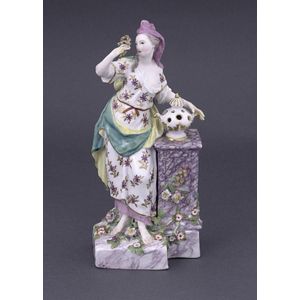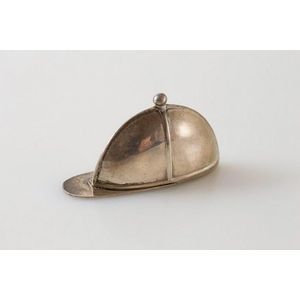Victorian Mahogany Chest with 4 Drawers and Castors
You must be a subscriber, and be logged in to view price and dealer details.
Subscribe Now to view actual auction price for this item
When you subscribe, you have the option of setting the currency in which to display prices to $Au, $US, $NZ or Stg.
- Castors - Wheels, fitted especially to chair legs, couches, tables and some smaller pieces of furniture, to enable them to be easily moved about. The earliest castors were of brass, with shanks fitting into the base of the leg, and the wheels often made of leather. In the late 18th century, brass 'bucket' or 'cup' castors were introduced, either rounded or square, fitting directly over the end of the leg and held in place with screws. The wheels were generally solid brass. Bucket/cup castors continued in use throughout the 19th century and indeed are still made today. In the later 19th century wheels were sometimes made of wood, china, either white or brown, and sometimes of steel.
- Victorian Period - The Victorian period of furniture and decorative arts design covers the reign of Queen Victoria from 1837 to 1901. There was not one dominant style of furniture in the Victorian period. Designers used and modified many historical styles such as Gothic, Tudor, Elizabethan, English Rococo, Neoclassical and others, although use of some styles, such as English Rococo and Gothic tended to dominate the furniture manufacture of the period.
The Victorian period was preceded by the Regency and William IV periods, and followed by the Edwardian period, named for Edward VII (1841 ? 1910) who was King of the United Kingdom and the British Dominions and Emperor of India for the brief period from 1901 until his death in 1910. - Mahogany - Mahogany is a dense, close grained red-coloured timber from the West Indies and Central America. It was first imported into Europe in the the early 18th century and its use continued through the 19th century. It was popular for furniture making because of its strength, the wide boards available, the distinctive grain on some boards, termed flame mahogany and the rich warm colour of the timber when it was polished.. The "flame" was produced where a limb grew out from the trunk of the tree, and this timber was usually sliced into veneers for feature panels on doors, backs and cornices.
Some terms used to describe mahogany relate to the country from which it originally came, such as "Cuban" mahogany, "Honduras" mahogany etc. However unless the wood has been tested the names assigned are more a selling feature, rather than a true indication of the timber's origin.
This item has been included into following indexes:
Visually similar items

A Chelsea figure, circa 1760, depicting a young woman beside a column surmounted by a pot pourri, gold anchor mark, 25 cm high

William IV sterling silver 3 piece tea set circular shape with all-over chased floral decoration on scroll cast feet, Exeter 1831 (milk jug one foot af)

Pair of Danish rosewood Chests of drawers, each having two short drawers above four long drawers, recessed pulls (2). Height 90 cm, width 80 cm, depth 45 cm

.925 sterling vesta formed as a jockey cap
